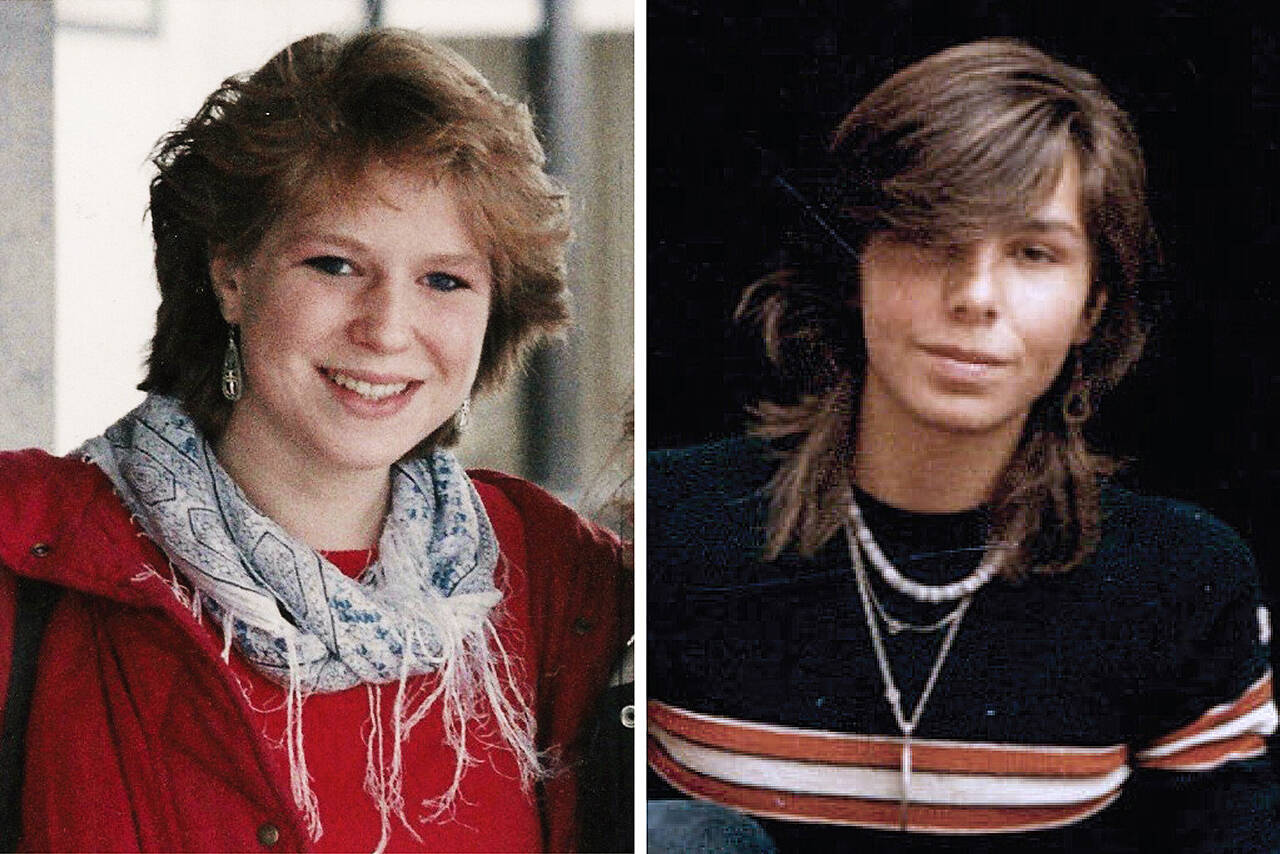Caleb Hutton/Everett Herald
EVERETT — Cold-case defendant William Talbott’s aggravated murder convictions were reversed Monday due to a juror’s bias, more than two years after a high-profile trial in the 1987 killings of a young Saanich couple, Jay Cook and Tanya Van Cuylenborg.
Snohomish County sheriff’s detectives arrested Talbott in May 2018, with the help of forensic genealogy — a then-novel technique where crime scene DNA evidence can be combined with a genealogist’s sleuthing to identify a suspect through public ancestry databases.
Talbott became the first person convicted by a jury in such a case. He was sentenced to life in prison for two counts of aggravated murder in the first degree.
Meanwhile, Talbott had appealed.
READ MORE: Unsealed record suggests U.S. man convicted in murder of Saanich couple left DNA on zip tie in 1987
Oral arguments were heard Nov. 3.
Three Division I judges on the state Court of Appeals found Monday (Dec. 6), that one of the jurors, No. 40, demonstrated “actual bias” while being questioned during jury selection and that further questioning had not clarified that she could set aside her biases and base her verdict strictly on the evidence.
According to trial transcripts, the juror said that “if it’s a case involving violence and women, it’s just something that I’ve already experienced in my life, and I fear that I will always inherently have as a mother, so that’s just the one thing that I probably couldn’t get past.”
“I mean,” a deputy prosecutor asked, “you would be a great juror on a different kind of case, it’s just not this kind of case.”
The juror replied that he was right.
She went on to say that she was unsure if she could be fair because “a flood of emotion might come over me … and cloud my judgment.”
The juror was still seated, heard witness testimony for weeks and reached the guilty verdict after about three days of deliberation.
“After her clear, repeated expressions of actual bias as to the precise nature of the allegations at the heart of this trial and evidence which would be introduced, we cannot conclude that juror 40 was sufficiently rehabilitated such that Talbott was provided a fair and impartial jury,” reads the ruling, authored by Court of Appeals Judge Cecily Hazelrigg.
Talbott’s appellate attorneys raised many other issues related to the evidence in the case, as did Talbott in court papers he prepared himself.
Only the question of juror bias was addressed in the ruling Monday.
The court did not address any concerns related to forensic genealogy.
READ MORE: Washington man guilty of 1987 murders of Victoria-area couple
Oak Bay High sweethearts Cook and Van Cuylenborg were on a trip to Seattle to pick up furnace parts for Cook’s father Nov. 18, 1987. Within days, their bodies were found many miles away.
Cook had been beaten, strangled and left dead beside a bridge near Monroe.
Van Cuylenborg had been shot in the head near Mount Vernon.
The van was recovered in an alley in downtown Bellingham.
Evidence inside became central to the investigation.
No suspect was arrested for over 30 years. Then a sheriff’s detective who inherited the case, Jim Scharf, learned about a new forensic tool that would lead to breakthroughs in many other long-unsolved cases. This was around the time the same technique was used, behind the scenes, to crack the Golden State Killer case.
With the help of DNA analysis by Parabon Nanolabs, genealogist CeCe Moore traced family trees on the ancestry database GEDmatch. The mother’s and father’s lines intersected with the Talbotts, a Woodinville family with only one son, William.
Scharf put the SeaTac trucker under surveillance. One day in south Seattle, a coffee cup fell out of his truck. An undercover officer swooped in to collect it. Saliva on the cup came back as an apparent genetic match with the semen.
For two Canadian families, the arrest meant long-awaited answers.
“They deserve justice to be done,” Tanya’s brother, John Van Cuylenborg, said at a news conference in 2018. “They were both gentle souls, caring and trusting kids, and they were betrayed.”
Snohomish County Superior Court Judge Linda Krese oversaw the trial. She has since retired.
At sentencing in July 2019, Talbott asserted his innocence in a brief, forceful speech.
“The level of violence in this is something I cannot comprehend,” he said in court. “I’ve gone all my life as a very passive person. I’ve never raised my hand towards anybody.”
The defendant also filed a 13-page typewritten appeal in late 2020, contesting the evidence against him.
“Imagine yourself somewhere, anywhere, and you experience a nose bleed, or you cut yourself on something sharp and you leave some blood, or other sources of DNA behind,” Talbott wrote. “Later, maybe the same day, maybe days later, and unknown to you, there is a violent crime committed at the very same spot, based on Snohomish County’s way of thinking, the only possible suspect, is the source of that blood, regardless of all other evidence, or lack of.
“These dangerous types of prosecution will lead to many wrongful prosecutions, as it did me,” Talbott concluded.
The defendant now faces a new trial — unless prosecutors prevail in an appeal to the state Supreme Court. The deadline to request a review from the higher court is Jan. 5, 2022, Snohomish County Prosecutor Adam Cornell said Monday.
“The closure we had hoped for at the end of the trial,” Cornell said, “is at least not apparent right now.”
The Everett Herald is a division of Sound Publishing and Black Press Media.
READ MORE: Arrest made in 30-year homicide cold case of Oak Bay High grads
Do you have a story tip? Email: vnc.editorial@blackpress.ca.
Follow us on Twitter and Instagram, and like us on Facebook.

